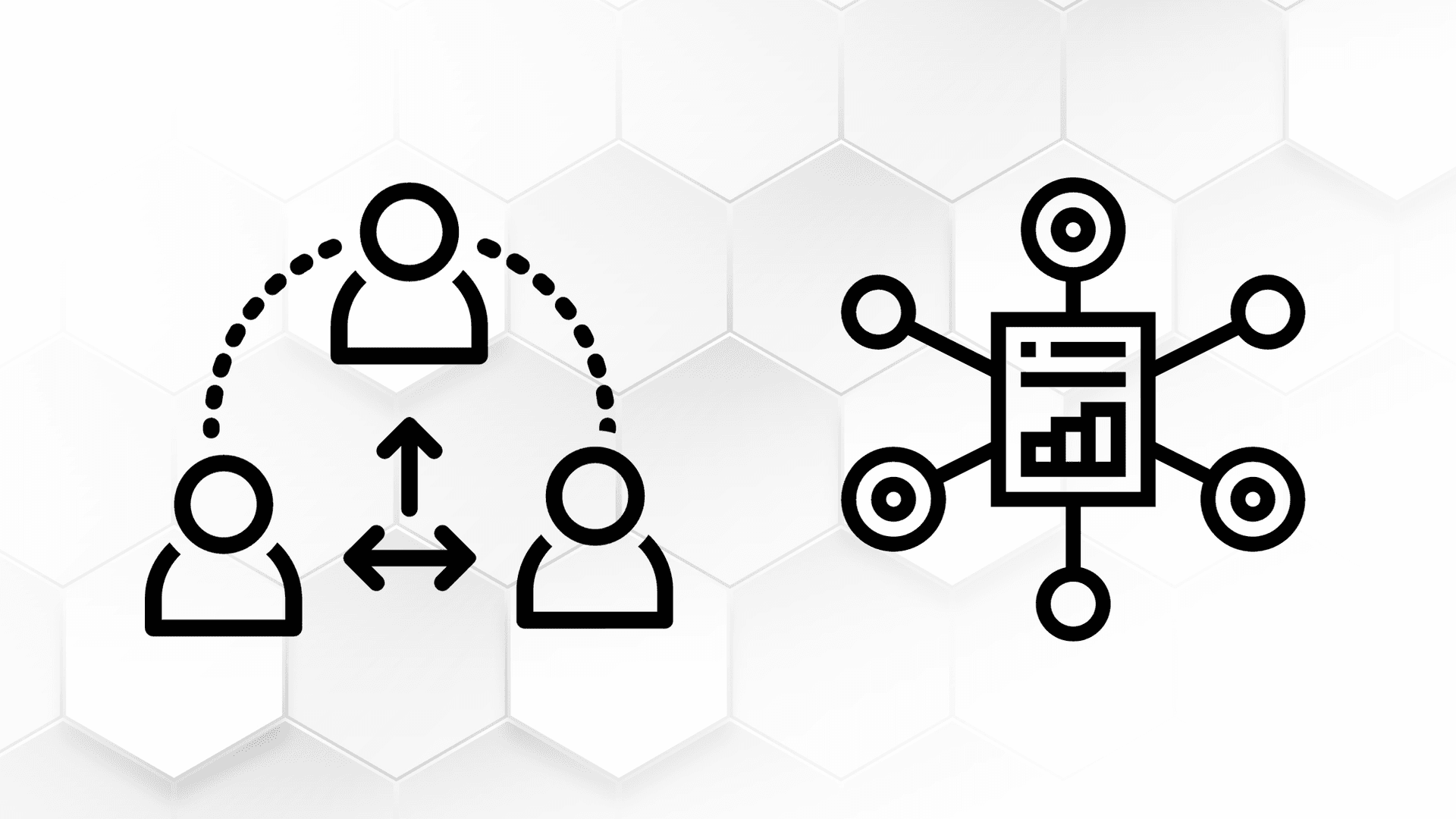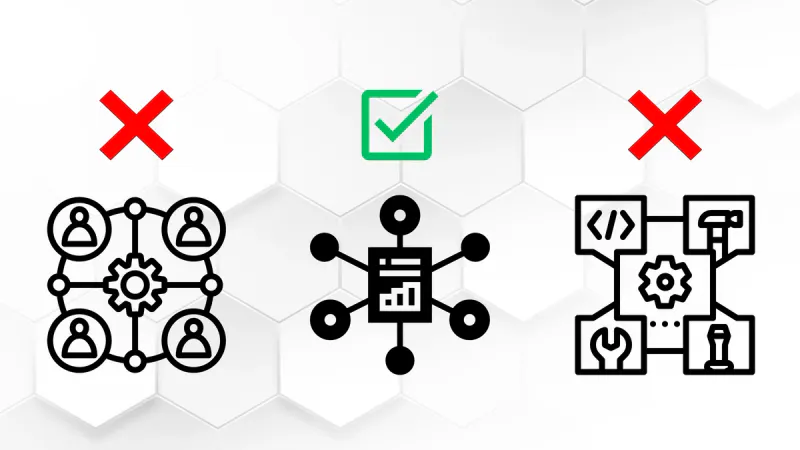
Reliance on third-party relationships increases risks for businesses. To manage risks with vendors, suppliers, partners, and affiliates, companies need a solid third-party risk framework.
This article explains what a third-party risk management (TPRM) framework entails and provides guidance on choosing one. We explain why TPRM is important to avoid penalties and reputational damage due to third-party incidents.
At Captain Compliance, we provide guidance on implementing a tailored risk management program. You’re welcome to choose between our compliance-as-a-service solutions and managed services. Learn how to strategically outsource your compliance while protecting your business.
Key Takeaways
- TPRM is Essential: Implementing a structured third-party risk management framework is essential for mitigating security and compliance risks from vendors and business partners.
- Factors to consider in TPRM: In choosing a TPRM framework, businesses must weigh factors like the value of assets and data involved, available resources, reporting, regulations, and risk appetite.
- Why TPRM is necessary: Even with risk management programs, businesses retain accountability for third-party incidents under regulations like HIPAA and GDPR. Non-compliance results in fines and loss of reputation, which negatively affect businesses.
What is a Third-Party Risk Framework?

A third-party risk management (TPRM) framework is a structured roadmap for evaluating and monitoring all third-party relationships to identify and mitigate potential risks. A TPRM framework provides standardized procedures for risk assessments, compliance monitoring, and issue escalation. A third party is a separate, independent entity that provides goods or services on behalf of a business.
TPRM programs are built upon a framework and help businesses maintain oversight of third parties, avoid regulatory non-compliance, and reduce the chances of data breaches or other incidents.
An effective TPRM program includes policies, procedures, roles and responsibilities, tools, ongoing monitoring, and reporting. The type of framework adopted depends on the criticality of the third-party relationship.
TPRM frameworks come in two types. First are frameworks tailored for TPRM, for example, the Shared Assessments TPRM Framework and NIST 800-161. Second are Information Security Management System (ISMS) frameworks that complement an existing TPRM program or are used to design a vendor risk assessment questionnaire, for example, ISO 27036, ISO 27001 (ISO is common in Europe and Africa), and NIST CSF v1.1 (NIST is common in the US and Canada).
Why You Need a Third-Party Risk Management Framework
With the growth of outsourcing, collaborations, and complex supplier networks, third-party relationships introduce significant cybersecurity, privacy, compliance, and operational risks. A TPRM program is essential for minimizing the risks to your business.
Increased risk awareness
Adopting a framework helps businesses increase their risk awareness, as they have a snapshot of the risk profiles of their business partners. A risk framework helps businesses keep track of third parties and stay organized. This awareness also helps businesses make informed decisions on whether to sign on a partner or terminate a partnership.
Mitigate third-party cyber risks
Third parties often have access to sensitive data and critical assets, increasing attack surfaces. A TPRM framework ensures proper security controls are in place to reduce hacks, leaks, and unauthorized access.
Avoid compliance violations
Regulations like the General Data Protection Regulation (GDPR) require oversight of third parties handling personally identifiable information (PII) and special PII. Non-compliance can lead to hefty fines, business license withdrawal, and loss of customers.
Adopting a TPRM framework demonstrates pro-activeness and rigorous control of high-risk third parties. Compliance with a TPRM framework could save businesses from wasting funds on damage control or consumer compensation if the incident never occurred in the first place.
Prevent business disruptions
If a key vendor fails, it can interrupt operations. The risk framework helps flag third-party instability early so contingencies or business continuity plans can be activated. Protecting from business disruptions with TPRM also helps prevent reputational damage.
Simplify complexity
Dealing with tens to hundreds or even thousands of business partners in multiple countries operating in diverse jurisdictions is often a compliance nightmare. A comprehensive TPRM framework helps to simplify things by providing actionable checklists and best practices.
Want a third-party risk management framework but don’t know how to make one? Get in touch for a free consultation now.
How to Choose a Third-Party Risk Management Framework

There are several risk management frameworks one can choose from, with the popular ones serving as the first point of reference.
A single framework is likely insufficient in developing a comprehensive TPRM program. As a result, most businesses combine several frameworks in building a risk management program that fits their business needs.
When selecting a TPRM framework, consider the maturity of the business, risk appetite, assets and data involved, available resources, and regulations.
Identifying an organization’s assets and organizational risks
The first step is identifying critical assets that need protection and understanding potential risks introduced by third parties. In curating assets, someone is assigned to list all business partners that are not internal.
Consider risks like data breaches if vendors have network access, non-compliance if business partners mishandle personal data, and disrupted operations if the key supplier fails.
In assessing risks, weigh the likelihood of occurrence with the impact on the business operations. Due diligence falls under risk assessment. Before signing on a new third party, it is important to conduct due diligence to confirm security posture, financial status, and general regulatory compliance.
Consider risk appetite
Not all frameworks are suited to every business’s risk appetite and tolerance. Selecting a TPRM framework aligned to your business risk profile is important. Try answering questions such as
- What is the overall attitude toward risk – risk-averse, moderate, or risk-seeking?
- What third-party risks are acceptable? Which requires very low tolerance?
- What is the threshold for the acceptable likelihood and impact of an incident?
- How risk-averse is leadership when it comes to third-party partnerships?
Document answers and desired risk appetite in TPRM policies and tailor the risk management program accordingly. Prioritize risks based on how they impact finances, reputation, and business continuity.
Asset and data involved
Some frameworks are best suited for particular types of assets. For example, a business relying on a third party for its credit card payment processing will want to confirm Payment Card Industry Data Security Standards (PCI DSS) compliance. Also, businesses involved in the supply chain might want to adopt a Supply Chain Risk Management (SCRM) program.
Available resources
Adopting a TPRM framework should not lead to bankruptcy. One way to save on costs is to utilize a Compliance-as-a-Service platform like Captain Compliance, which offers managed services more affordable than building out an in-house team.
Regulations
Some regulations make the adoption of some frameworks mandatory. Non-compliance leads to paying fines for violations or forfeiting business operations.
Reporting
Reports help to engage stakeholders and keep them in the know about risk management practices. It is, therefore, vital to adopt a framework or TPRM tool that streamlines reporting.
Is My Business Liable For Third-Party Breaches?
Yes, businesses remain accountable for third-party risks under regulations like the Health Insurance Portability and Accountability Act (HIPAA) and GDPR. Non-compliance fines, lawsuits, and reputational damage can result without diligent oversight of vendors.
HIPAA violations
HIPAA considers covered businesses responsible for Protected Health Information (PHI) breaches by business partners. Both parties face penalties. Read more about the role and purpose of a HIPAA compliance officer here.
GDPR enforcement
Under GDPR Article 28, data controllers must ensure processors (third parties) follow required security provisions. Both parties have joint liability. Check out our GDPR compliance checklist to help you in your compliance efforts.
Reputational harm
Consumers won’t care that it was a third party that was breached. An incident still damages the brand’s reputation and consumer trust.
Need help with implementing a third-party risk management framework Get in touch for a free consultation today.
What are the Best Practices for a Third-Party Risk Management Framework?
Generally, TPRM frameworks consolidate several key best practices and also require aligning with best practices for an effective risk management program. Ensure that your chosen TPRM framework has some of the features listed below.
Continuous monitoring
Choose a framework that regularly reviews third-party cyber maturity, personnel changes, performance, finances, and compliance. The frequency may be high depending on the risk level. Continuous monitoring requires constantly updating the inventory of all vendors and business partners.
Incident response planning
The chosen framework must define escalation protocols and contingency plans in case of a third-party incident. This calls for the creation and maintenance of clear policies for third-party risk management.
Everyone should be clear on their duties and responsibilities, the procedures for risk assessment and due diligence, and, most importantly, the criteria for signing on business partners.
Automation
TPRM programs involve countless data gathering. It is important to choose a framework that allows for some (if not all) automation of some aspects, such as data gathering and data analysis.
Defense in depth
Applying this multiple-layer security principle to TPRM frameworks means that the chosen framework must incorporate three lines of defense.
The first line of defense focuses on functions in the framework that own and manage risks. The second line of defense focuses on functions that manage risk and compliance. The third line of defense is functions that provide independent assurance from external auditing.
Ongoing audits
Select a framework that frequently verifies that all third-party controls and contractual obligations are met through ongoing audits.
Easy integration
Change management can be difficult for everyone involved, so ensure to adopt a framework that integrates with existing workflow so there is minimal disruption during adoption. For example, if most business partners are based in Europe, for easy integration, it might be best to build a TPRM program on ISO frameworks.
Appoint a TPRM Owner
Although compliance is a collective effort starting with the management, appointing an individual to drive this company-wide change will boost compliance efficiency. TPRM owner could also be the compliance officer for the business.
Widely available and frequently updated
You don’t want a framework that is here today, gone tomorrow, or only found in the corners of the web. Ensure to go for a framework that makes its publications publicly available with frequent updates to keep up with the ever-evolving risk landscape. This also reduces conflicts or misunderstandings, as there is a single source of truth.
For example, everyone is on the same page regarding definitions of risk levels. Being widely available also means it is easier to find remediation processes associated with the framework.
Training and Awareness
A framework no one knows about or only a few are aware of its existence is a risk in itself. It is important to train all employees on the adopted frameworks. Compliance is a collective effort, so everyone doing the right thing at the right time will make the compliance team’s work easier.
Training materials and the frameworks themselves should be periodically updated to align with current realities and developments. For instance, the OWASP 2021 list added three new risks not in the 2017 list.
How Can Captain Compliance Help?
With data breaches on the rise, regulatory penalties increasing, and supply chains growing more complex, businesses cannot afford to neglect third-party risks.
You need professional guidance when it comes to TPRM – and that’s where Captain Compliance comes in. We have industry-leading experts on our team ready to evaluate your business and provide next steps for you.
FAQs
What is a third-party risk management framework?
A TPRM framework is a structured roadmap for assessing, monitoring, and controlling risks associated with business partners such as vendors, suppliers, and contractors. TPRM frameworks provide policies, procedures, and tools for managing third parties.
Find out why you need TPRM frameworks in our compliance framework guide.
What are the main types of risks introduced by third parties?
The key risks presented by third parties, including vendors, suppliers, contractors, and other business partners, include cybersecurity threats, compliance violations, interruptions to business operations, and damage to the business reputation.
Check out our Accountability Framework guide to understand why you are liable for third-party incidents.
What are the 5 phases of third-party risk management?
The main phases are
- Risk Identification,
- Risk Assessment,
- Risk Mitigation,
- Risk Evaluation, and
- Risk Monitoring.
Visit our corporate compliance guide for details on how to maintain compliance.
What is the third-party risk process?
Key steps in the risk management process involve identifying third parties, identifying and assessing risks, requiring security controls, continuous monitoring, enforcing compliance, incident management, and audits.
Learn more about outsourcing the TPRM process through our compliance solutions.
What are some important metrics for a TPRM program?
Relevant metrics include third-party assessments completed on time, issues identified and mitigated, oversight cost savings, audit performance, risk score improvements, and customer satisfaction.
Find out the best data protection compliance service to help you meet these metrics.
How often should a TPRM framework be updated and reviewed?
This depends on the type of framework. Annually reviewing program scope, priorities, processes, and tools allows realignment to changing business needs, emerging risks, and new innovations in managing third-party risk.
Check out our Compliance Solutions to find out how we can help you remove your compliance burden.
How do you create a third-party risk management framework?
- Start by defining scope, roles, and risk approach.
- Draft policies and standard procedures leveraging the chosen TPRM framework.
- Select enabling tools or outsource to us at Captain Compliance.
- Establish risk management processes aligned to third-party relationship lifecycles.
Get tips in our Compliance Framework Guide.